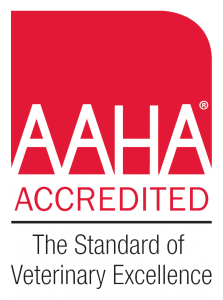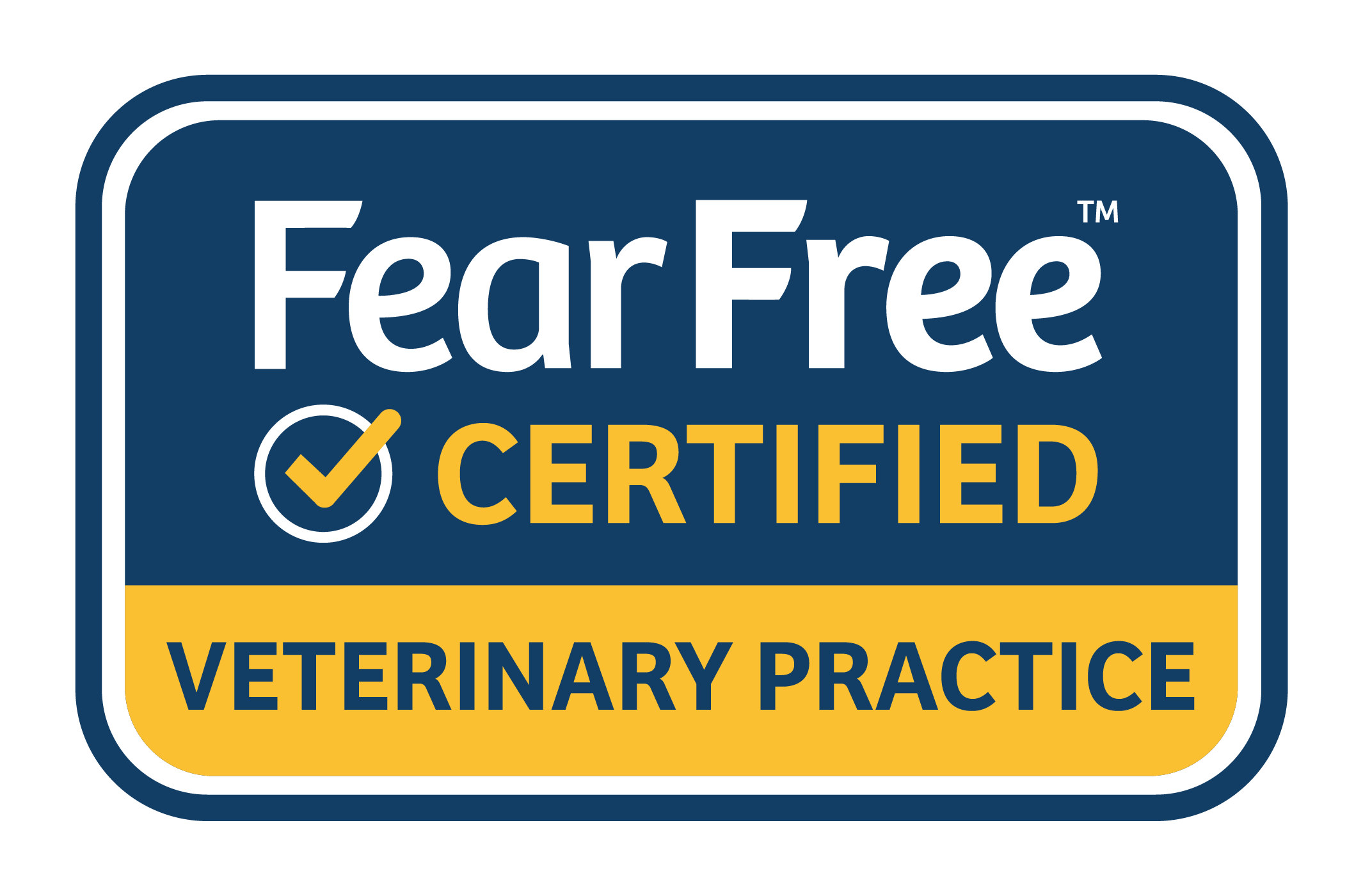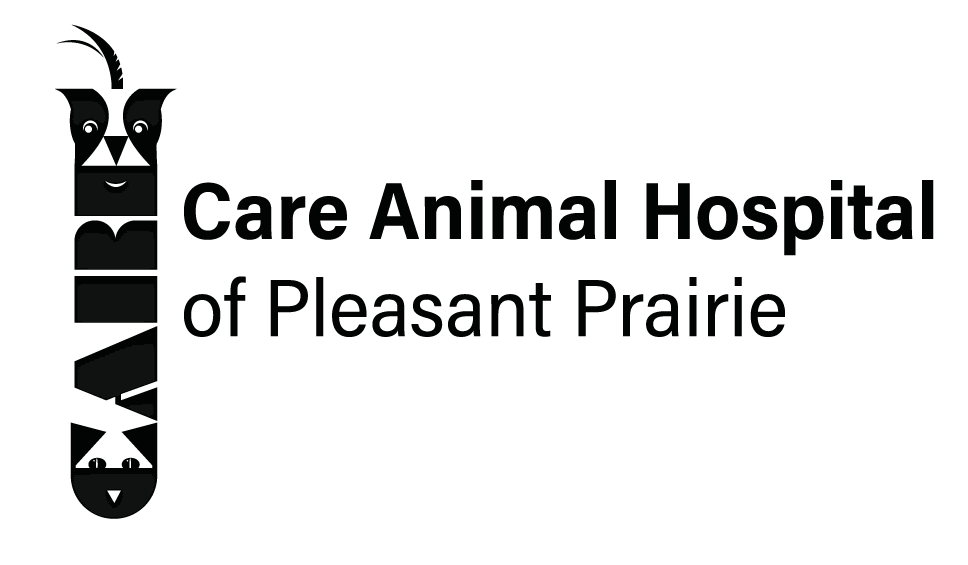The rehabilitation process begins with a Physical Medicine Evaluation. The comprehensive evaluation is done by a veterinarian certified in canine rehabilitation, acupuncture and spinal manipulation. The assessment will include a physical, neurological and orthopedic exam. The rehabilitation team will also review current medications, home environment, medical and surgical history. Objective measurements are obtained of your pet’s musculature, joints, gait and posture. This allows our certified rehabilitation team to better understand your pet’s current health status. The final step is a discussion of your expectations and goals to plan the best individualized rehabilitation/conditioning program for your pet.
Our Programs:
Orthopedic/Neurological– To increase your pet’s level of comfort and to begin regaining function, we can focus on strengthening, flexibility and gait retraining.
Geriatric/Osteoarthritis– Our goal is to increase mobility and strength so senior pets can maintain a high quality of life.
Weight Loss Program– Our program is focused on underwater treadmill and exercises to reduce the risk of injury by increasing mobility.
Athletic Conditioning– Our athletic program can assist you in increasing your pet’s fitness level by improving cardiovascular endurance and your pet’s muscular health.
Once your pet has had their Physical Medicine Evaluation, our certified rehabilitation team is specially trained to assist in the recovery of mobility, balance, and strength through a wide range of therapy options including:
Alternative Therapies
Acupuncture
The technique requires the insertion of fine needles into the dog’s body at specified points, called acupuncture points, where nerves and blood vessels converge.
Acupuncture improves blood flow which increases oxygenation of tissues. It also reduces the amount of waste products produced and increases the amount of metabolic waste the body can remove, so there is a systemic benefit.
Acupuncture relaxes muscles both where the needle is inserted, and muscles located elsewhere in the body, so it relieves pain both locally and generally. By stimulating the release of naturally occurring pain relieving and anti-inflammatory substances, acupuncture may decrease the amount of pain medications needed to treat these dogs.
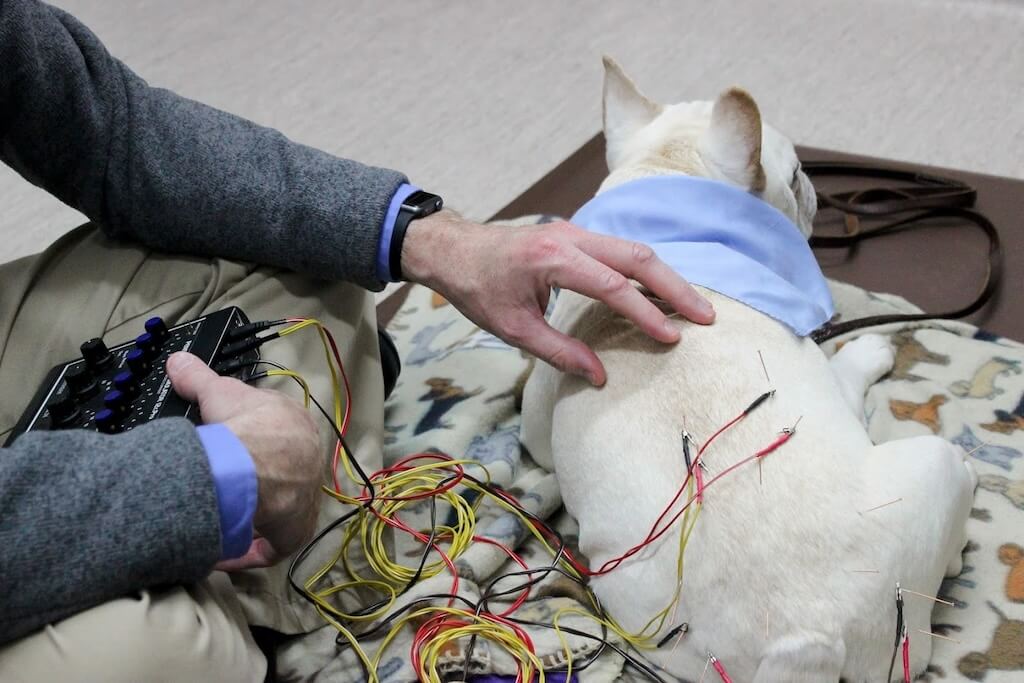
VSMT
VSMT, or veterinary spinal manipulative therapy (similar to chiropractic), can be used to improve and maintain the musculoskeletal and/or neurologic health of the patient. VSMT focuses primarily on the biomechanics of the spinal column and its relationship with the nervous system. The vertebrae (bones of the spinal column) and adjacent soft tissue are maintained in a specific alignment. The nerves that pass between the vertebrae are in constant communication with the central nervous system.
When even a subtle change in the alignment occurs, it is called a subluxation. A subluxation decreases transmission of information into or out of the central nervous system. The subluxation is treated by an adjustment. An adjustment is a manual procedure that consists of a high velocity (fast), low amplitude (gentle) thrust with a specific line correction along the plane of a joint. Some animals may require a few sessions to resolve acute pain. Others may require several visits to re-establish and maintain normal function of the joints and nervous system for a chronic health issue.
Underwater Treadmill
The Underwater treadmill was designed to improve the lives of canines and small animals. Offering a low-impact and high-resistance treatment for rehabilitation from injury, optimal training/conditioning and weight loss. Utilizing the natural properties of water (buoyancy, resistance and hydrostatic pressure) for a rigorous cardiovascular workout with reduced impact and stress on joints.
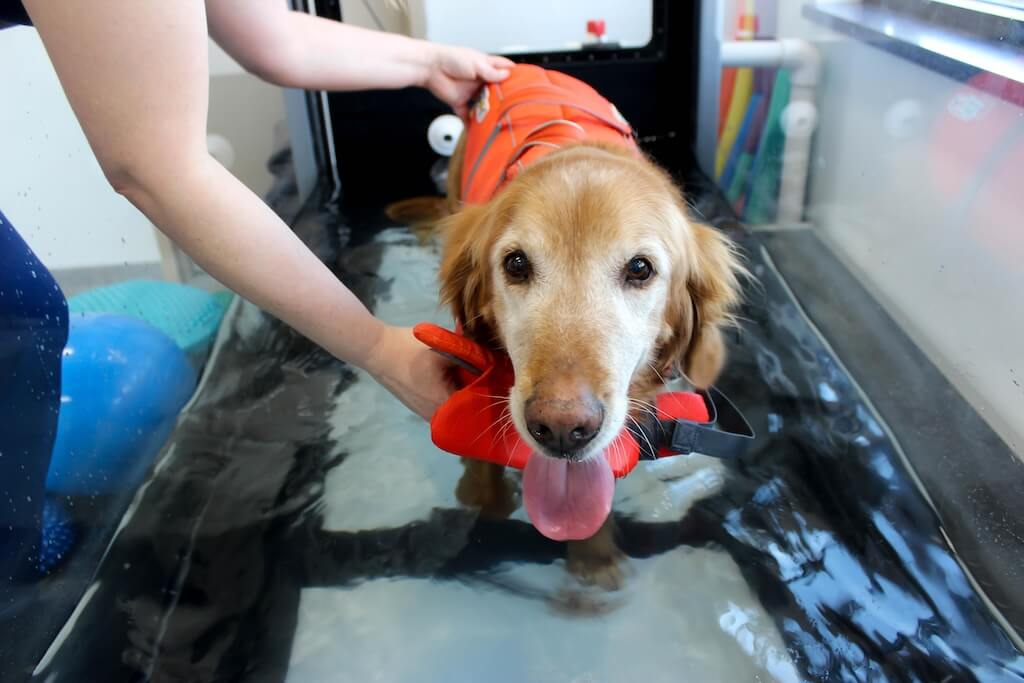
Manual Therapy – Massage, Passive Range of Motion (PROM), stretching
This is a process of manual mobilization of joints in a specific range of motion to facilitate the improved function of the joint and decrease surrounding muscle tension.
Therapy Laser – Light therapy through a process known as photobiomodulation
Photobiomodulation (PBM) therapy occurs when a dose of light energy reaches target tissue and results in decreased inflammation, decreased pain, and accelerated healing. This doctor-prescribed, technician-driven modality effectively treats a wide variety of conditions including pre-surgical, post-surgical, acute, and chronic disease states.
Prescribed medications and recommended nutraceuticals
Medications are still an integral part of pain management. In order to effectively rehabilitate your pet, they need to be relatively pain free.
For refills of medications you can call and request one or click on the “Contact Us” link to send us an email requesting a refill.
We also have a partner online pharmacy you can request your refills through.
Therapeutic Exercise
Combination of strengthening, stability and proprioceptive exercises designed specifically to increase muscle mass and mobility in each specific patient.
Home Exercise Program or HEP
You are encouraged to take an active role in your pet’s therapy by following a prescribed exercise program at home. This plan is designed to address pain and/or dysfunction identified with the Physical Medicine Evaluation. At multiple points during this rehabilitation process, a series of home exercises will be assigned. The certified rehabilitation team will demonstrate and explain each exercise, so you feel confident doing them at home on your own. These exercises are essential to the rehabilitation process because they continue the momentum and progress in between rehabilitation sessions. We work as a team to help your pet return to optimal function. We are always accessible by telephone or email to address any questions or concerns.
Referral Process
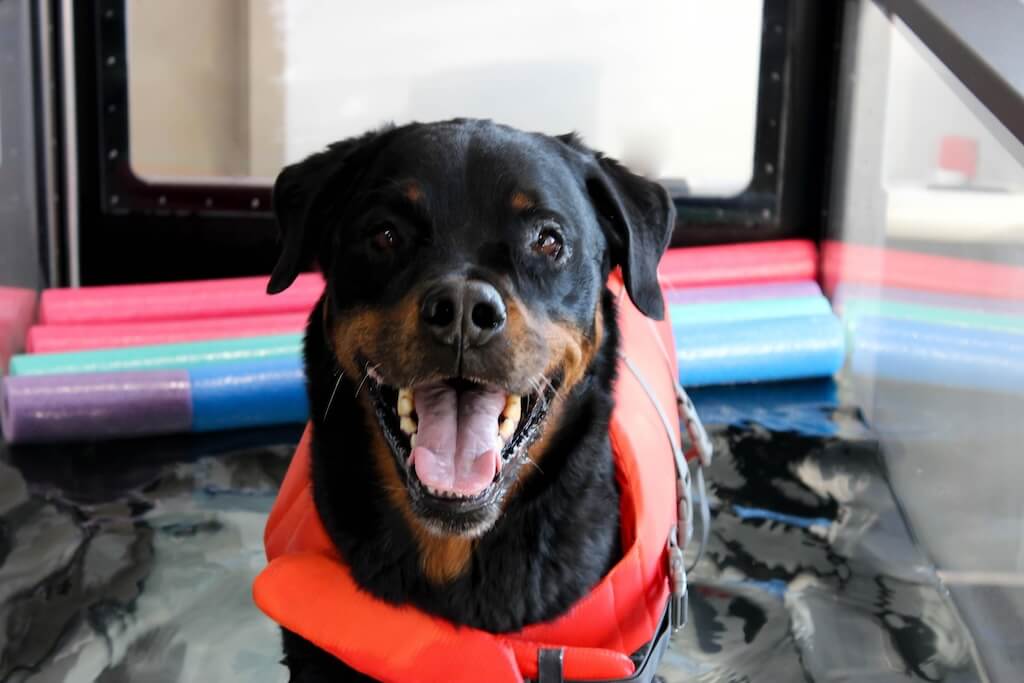 If your pet is a patient of Care Animal Hospital and one of the veterinarians feels that your pet would benefit from the additional care and services offered by the Physical Medicine Department, they can refer your pet for an evaluation.
If your pet is a patient of Care Animal Hospital and one of the veterinarians feels that your pet would benefit from the additional care and services offered by the Physical Medicine Department, they can refer your pet for an evaluation.- If your pet is not a patient of Care Animal Hospital, your veterinarian can refer your pet in for an evaluation and rehabilitation services. A referral is not needed. If we see your pet without diagnosis referral we may need to do further diagnostic work up beyond the evaluation to ensure we are treating the correct problem.
